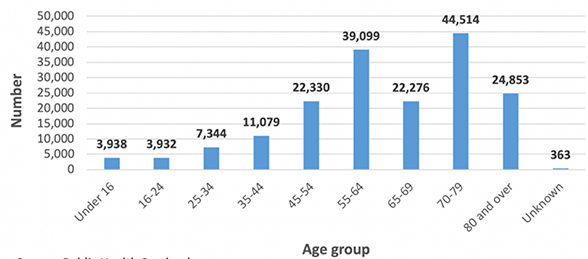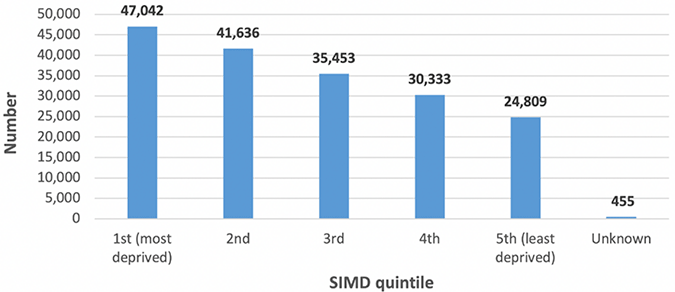Coronavirus (COVID-19): shielding - a way forward for Scotland
An update on the future direction of shielding policy in Scotland.
Experiences of Shielding
The aim of shielding is to protect people who are at greatest risk of severe illness if they catch COVID-19. But asking people to stay at home and minimise all contact with others for a long period of time may significantly impact on their quality of life, mental and physical health.
Healthcare
It is vital that those shielding get the care they need in the safest way possible. This may be routine or urgent GP or hospital care. To ensure we can provide the care needed in a safe and timely manner, people's needs will be assessed by a clinician as part of any GP or hospital care. They will do a risk assessment and decide where, when and how people are seen. This risk assessment is part of the care that doctors and other health professionals do every day
to meet the needs of their patients.
Following a risk assessment, it may be that clinicians decide it is best to carry out a consultation or appointment over the telephone or via Near Me (a video calling service used by the NHS). Other times, a face to face consultation or appointment may happen at home, but equally (after assessment of infection risk, clinical need and service capacity) may involve going to a practice, health centre or hospital to be seen.
Physical health
By asking people to stay at home while shielding for 12 weeks, we have limited many people's opportunities to be physically active. Inactivity and a more sedentary lifestyle can significantly increase people's risk of muscle loss, and loss of heart and lung fitness. In turn, loss of strength in key muscle groups can also increase people's risk of falling.
Social isolation
In asking people to shield, we are asking them to undertake an extreme form of self-isolation, physically isolating themselves from the outside world and minimising contact with anyone else they live with. Whilst people have been encouraged to stay in touch with others through phone and social media, we recognise that the loss of physical contact can be very difficult emotionally, particularly if sustained over a long period of time.
While many people are experiencing social isolation, we know that the impact of increased isolation can be particularly severe for older people, and the shielding population is significantly older than Scotland's population as a whole: around half of shielding people are 65 or over, and almost three quarters (73%) are 55 or over.

Source: Public Health Scotland
Shielding brings different challenges for different people. For those who live alone – and around 20% of over 16s in Scotland are living alone, including 41% of those over 70[1] – the increased isolation can have a particularly detrimental effect on their mental health. But it can also impact on physical health. We know that social relationships can influence mortality in the way that smoking, physical exercise and alcohol consumption can.[2]
People also have different social networks of support. Before the pandemic, household surveys suggested that around 4% of the population stated that they only had one person or no one they could rely on.[3] But almost a third of people who have been asked to shield (32%) have asked for deliveries of basic groceries that are being offered to people who don't have anyone able to bring them supplies.[4]
Mental health and wellbeing
We are working to better understand the impact that COVID-19 has on the mental health of people who are shielding. But from surveys that the Office of National Statistics has carried out across Great Britain, we know that around half of adults with an underlying health condition are reporting that their wellbeing is affected by the pandemic. We also know that adults with health conditions are more likely to score highly for anxiety than the wider population (44% versus 33%).[5]

Source: Public Health Scotland
Deprivation
Shielding disproportionately affects people in more deprived areas. A quarter of the shielded population live in the most deprived quintile of Scotland, and almost twice as many people asked to shield live in the most deprived areas than in the least deprived. People in more deprived areas are more likely to live in poor quality housing and less likely to have access to green spaces, which will exacerbate the challenges of shielding.
Fuel poverty
In 2018, 25.0% of households (619,000) in Scotland were estimated to be in fuel poverty, and older people accounted for over a third of those households.[6] People who are shielding strictly will be spending all their time at home, which could exacerbate previous fuel poverty issues. Although heating use may have reduced over the warmer months, spending more time at home may increase energy use for things like cooking, lighting and using digital devices.
Digital exclusion
Older people are less likely to have digital access, and even if they do then they are less likely to use it: only 38% of people 75 and older use the internet. Adults with long-standing physical or mental health conditions are also much less likely to use the internet than adults without such conditions. And though it has been reducing over time, there is still a 30% gap in internet access at home between the highest (99%) and lowest income groups (69%).[7] So while shielding support can also be requested by phone and does not require internet access, the social isolation that can result from shielding is likely to be felt more strongly among groups that experience digital exclusion.
Education
Over 3,900 children under the age of 16 have been asked to shield, and many more children will live in households with someone shielding. While we hope that schools and nurseries will begin to reopen in the coming months, this could lead to new and difficult challenges for the shielding households affected.
At the moment, we are advising that children who are shielding do not attend educational settings when they reopen, and that Local Authorities make alternative arrangements to assure the education, safety and welfare of the child. We will not change that recommendation until the clinical advice tells us it is safe for shielding children to attend school in person. Children who live in households where someone is shielding should only attend educational settings following an appropriate assessment of risk and if they can strictly follow physical distancing there.
We have published guidance on reopening for education authorities and schools which includes advice on support for children who are shielding or live in shielding households. The guidance can be found at https://www.gov.scot/publications/coronavirus-covid-19-re-opening-schools-guide/pages/people-who-are-clinically-vulnerable-or-shielding/, and will be kept up to date with the latest advice. We will also be publishing guidance for parents and carers, to help answer the key questions they may have about children returning safely to school. This will be available at https://www.parentclub.scot/articles/reopening-schools-faqs.
Contact
Email: shielding@gov.scot
There is a problem
Thanks for your feedback